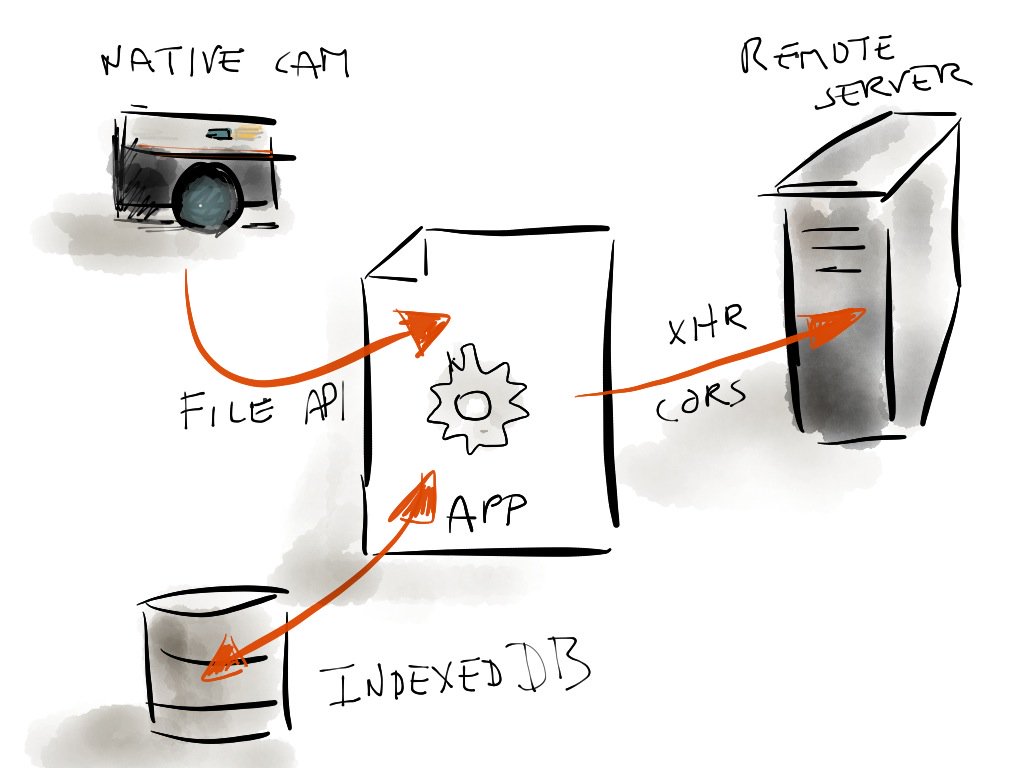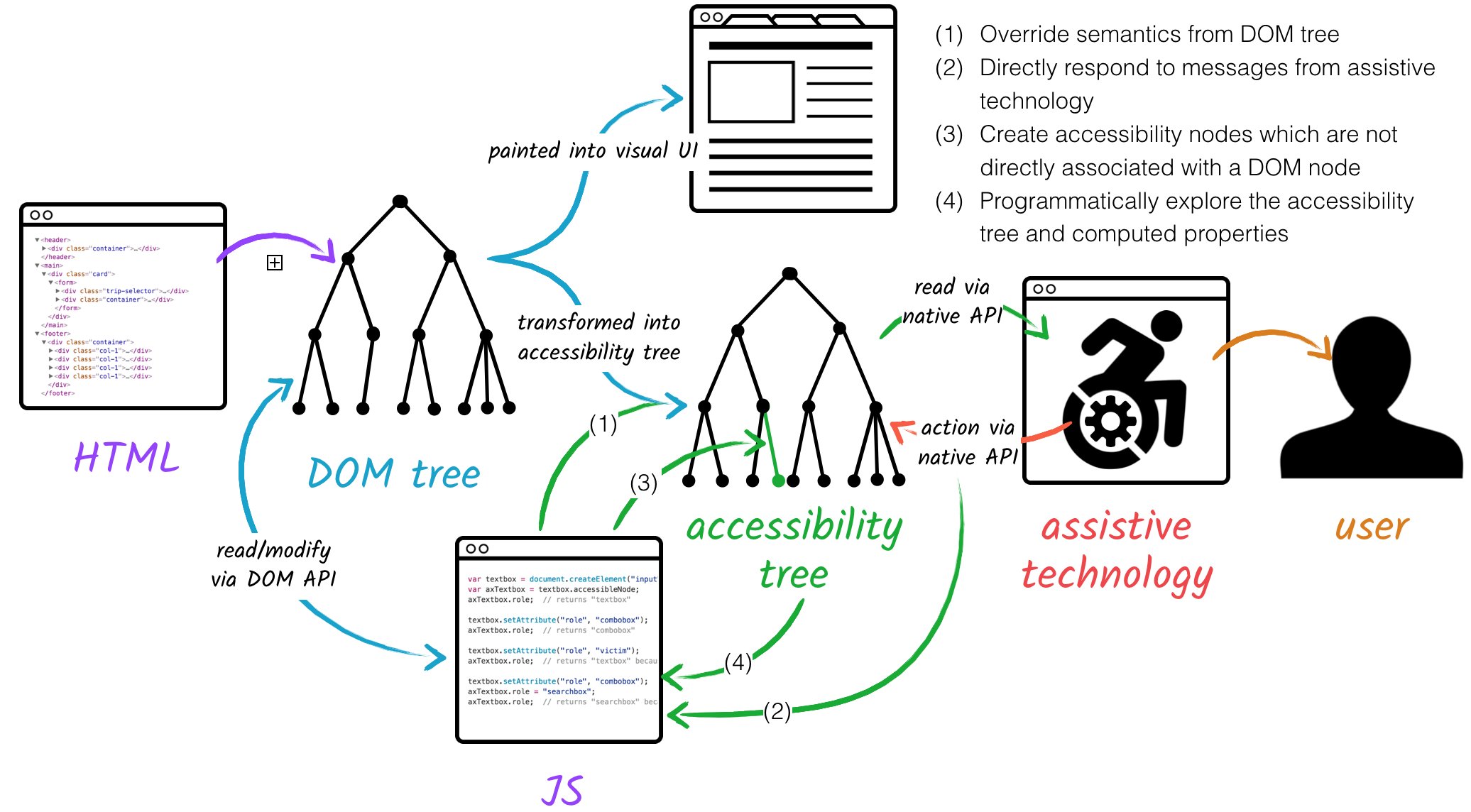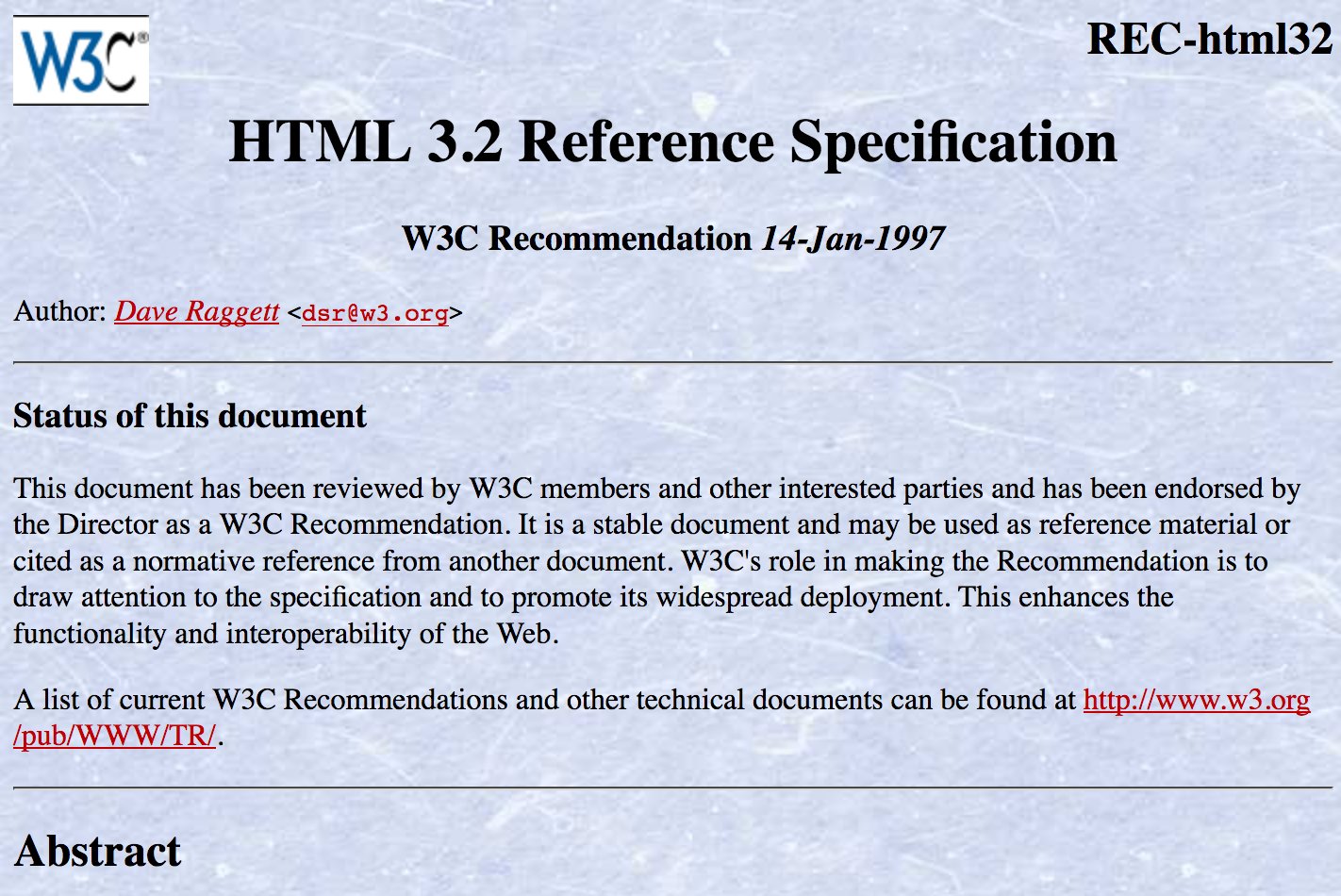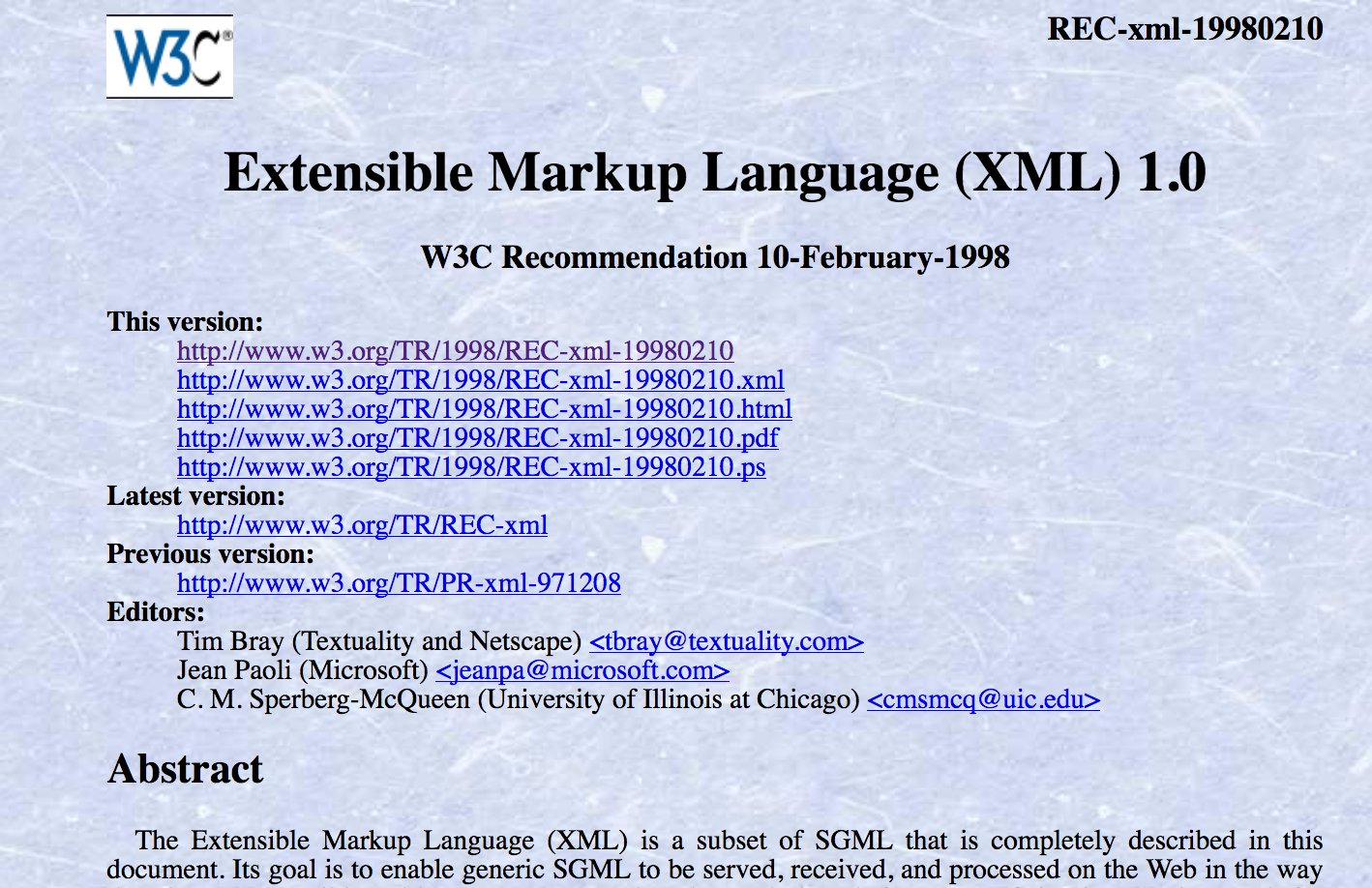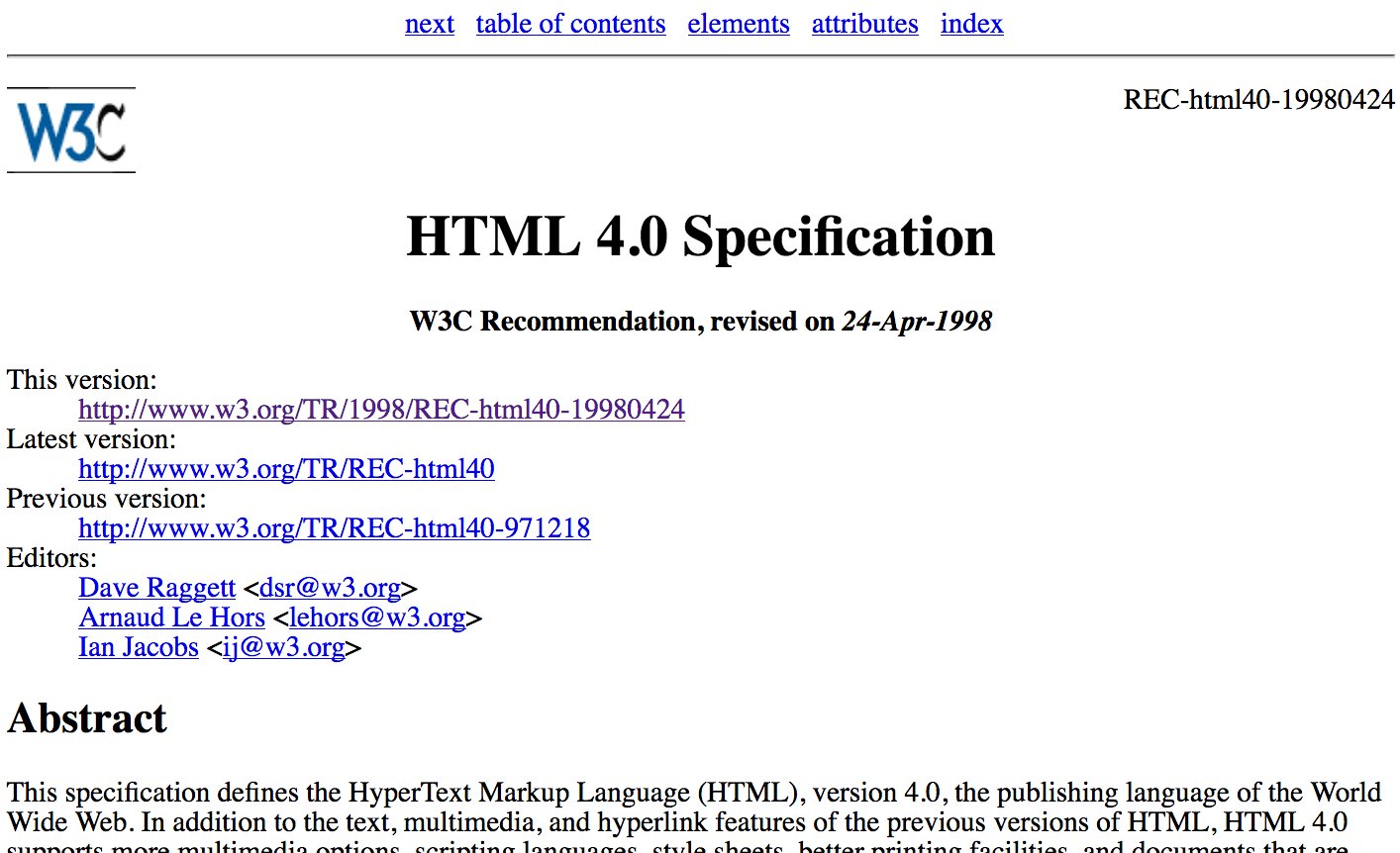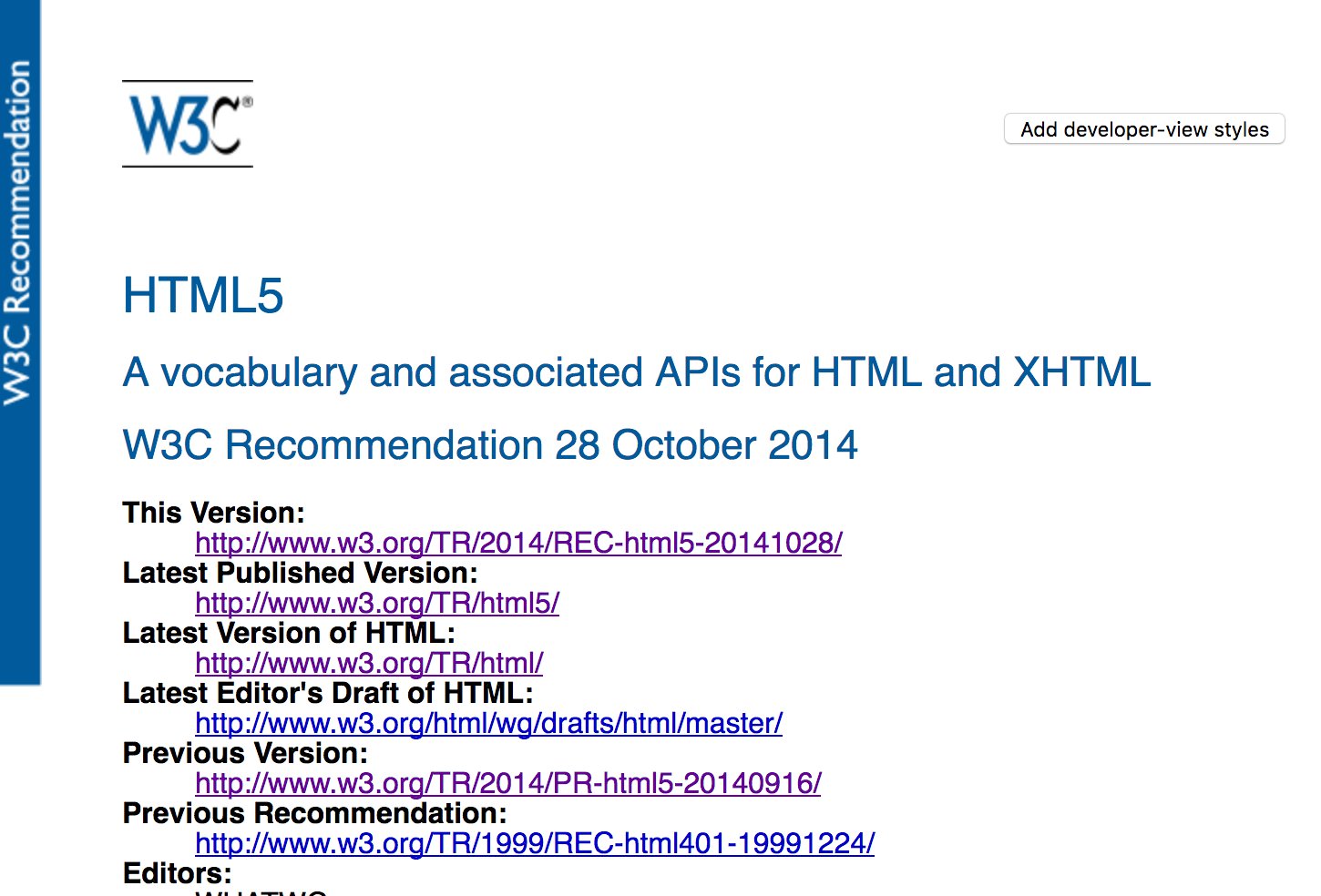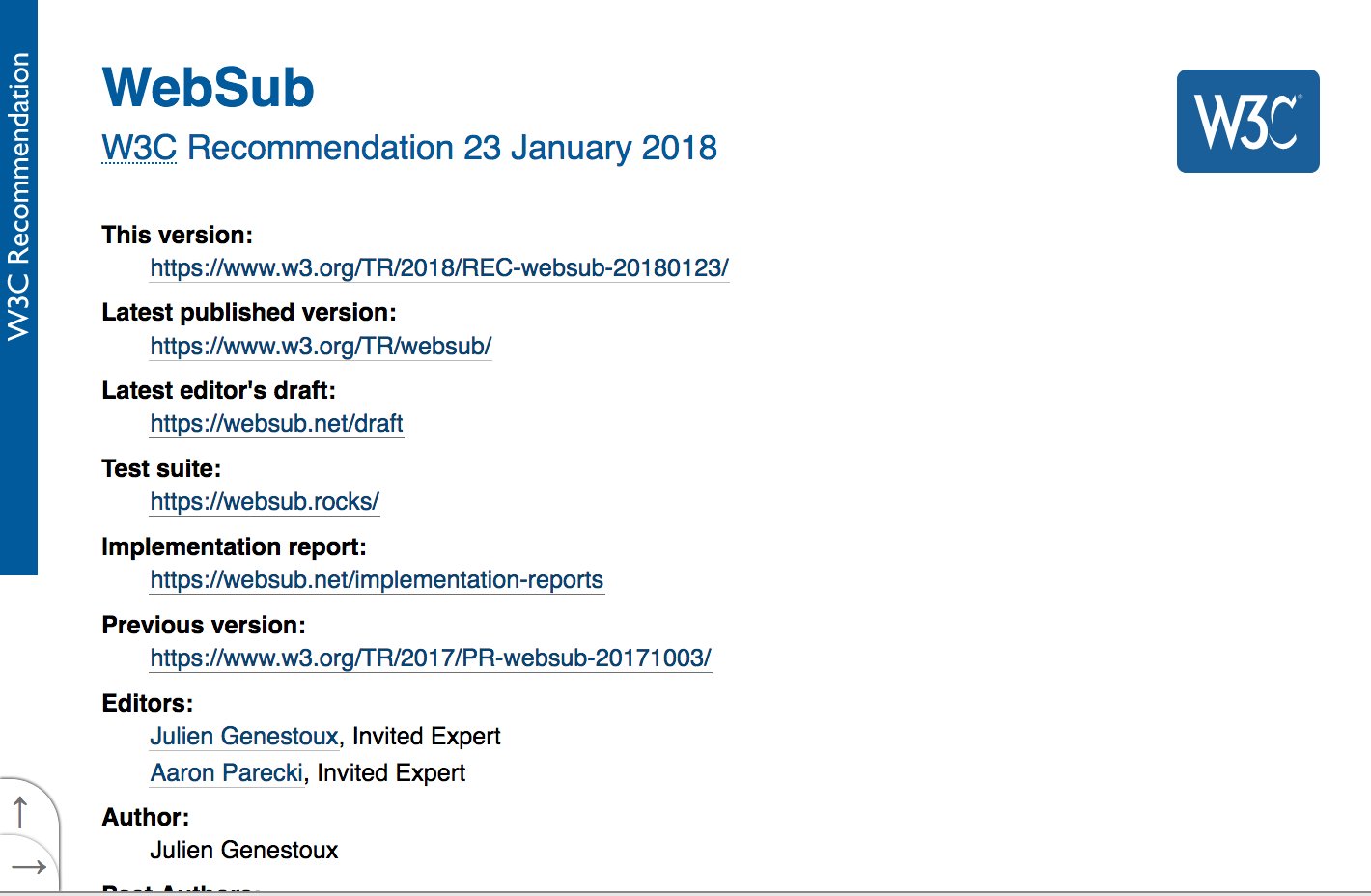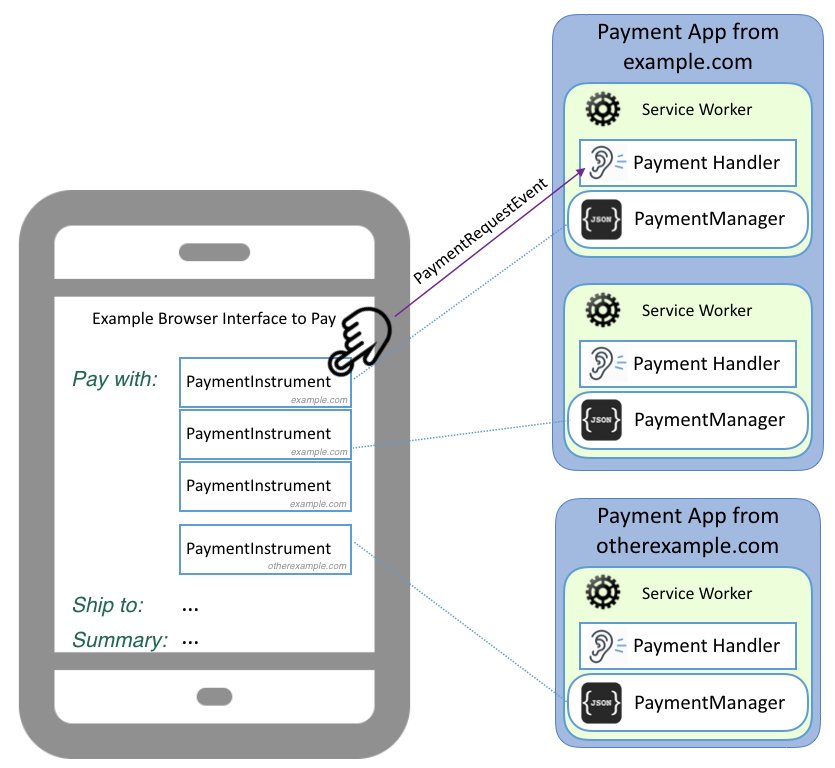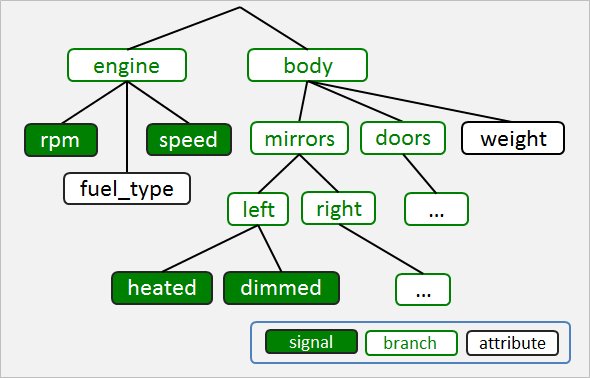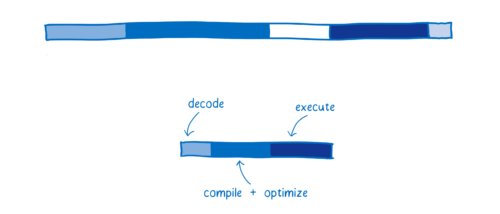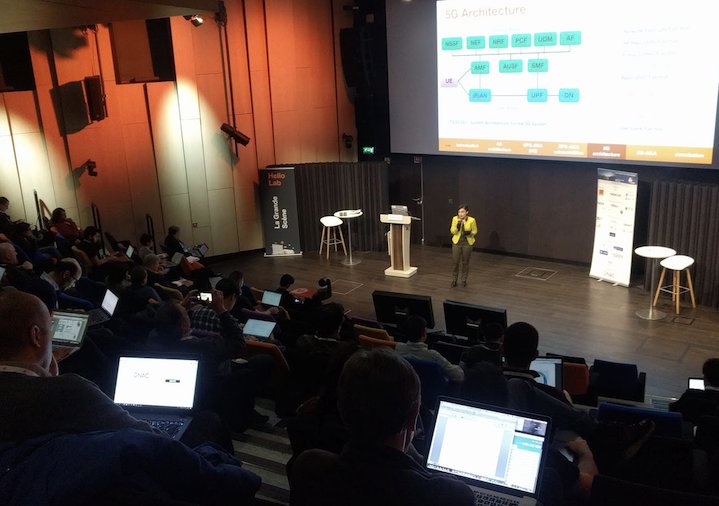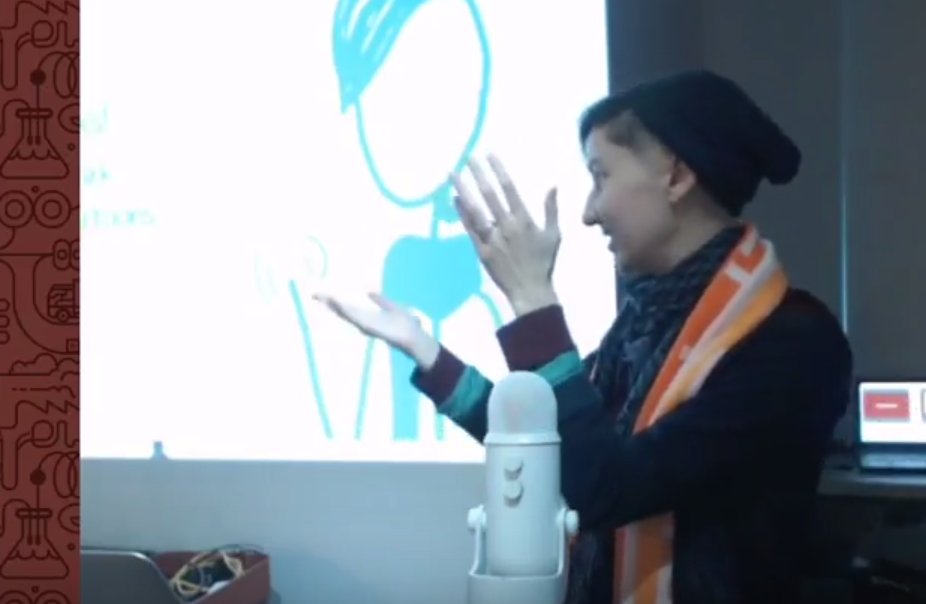Where to meet and interact with @w3c in February?
... tonight 1st Feb., #Accessibility #meetup in Hamburg, Germany http://www.roledrinks.de/ @yatil @lassediercks #a11y
... also tonight, @tag #meetup in London https://ti.to/w3c-tag/meet-the-tag-london https://twitter.com/w3cdevs/status/956845017729028096
https://twitter.com/w3cdevs/status/958974801355399168... on 16 Feb., http://chapters.io #meetup on #webassembly with @linclark https://www.meetup.com/Pittsburgh-Code-Supply/events/247167663/, cooked by @briankardell in Pittsburgh
https://twitter.com/w3cdevs/status/958975585283395584... on 22 Feb. in Paris, @dontcallmeDOM speaks @ICIN_conference on standardizing service infrastructure for #5G https://www.w3.org/events/talks/2018/5g-are-we-on-the-right-track-standardizing-service-infrastructure-for-5g/
https://twitter.com/w3cdevs/status/958975794595983360... 26 Feb. is the deadline to submit a position statement for the #dataprivacy18 #W3Cworkshop
https://twitter.com/w3cdevs/status/958262777583407104
https://twitter.com/w3cdevs/status/958976026641616897... and on 27-28 Feb., @dontcallmeDOM and @JAlanBird will be at #MWC18, Barcelona! Contact them to discuss #WebRTC, #WebAR, #WebVR, #PWA and #WebPayments.
https://twitter.com/w3cdevs/status/958976301016211456Or in the words of his deservedly proud editor: https://twitter.com/anssik/status/958988914961866752
Congrats to @anssik for bringing this specification to the last stage https://www.w3.org/TR/2018/REC-html-media-capture-20180201/ !
HTML Media Capture provides a markup hint (the capture attribute on an <input type=file>) to make a file input gets its content from a camera rather than a filesystem #timetoadopt https://twitter.com/w3c/status/958987094554304518
https://twitter.com/w3cdevs/status/959000804966486016The work started almost 8 years ago (!) https://www.w3.org/standards/history/html-media-capture - some good chunk of it waiting for implementation.
https://twitter.com/w3cdevs/status/959000809097891840It is available mostly on mobile browsers at the moment - Safari iOS and Chrome Android https://caniuse.com/#feat=html-media-capture but can be used as a purely progressive enhancement.
https://twitter.com/anssik/status/935541786835144710
https://twitter.com/w3cdevs/status/959000806925258752This particular approach delegates all the camera settings and controls (e.g zoom, white balance) to an existing camera application.
https://twitter.com/w3cdevs/status/959000813090852864HTML Media Capture aims at making it super easy to build Web-based camera apps. See @tobie 's nicely illustrated description of how it fit in that view https://github.com/tobie/camera
https://twitter.com/w3cdevs/status/959000810729467904A complementary API is under development to bring that control to the Web app directly https://w3c.github.io/mediacapture-image/ developed at https://github.com/w3c/mediacapture-image
That one is available in @googlechrome and in development in @firefox https://bugzilla.mozilla.org/show_bug.cgi?id=888177
https://twitter.com/w3cdevs/status/959000814663688192The @tag awakens (for the second day of their meeting) - RT if they should keep fighting the Proprietary Empire, ♥ if they should go back to sleep. https://twitter.com/triblondon/status/958980086652313600
https://twitter.com/w3cdevs/status/959002402803380224@kennethrohde achievement unlocked 🏆: use of “non-relativistic scalar" in a pull request comment https://github.com/w3c/sensors/pull/340#discussion_r165300456
https://twitter.com/w3cdevs/status/959010607663075328Right now, the draft new charter is setting the group to finish its ongoing work, look at bringing low-level APIs to get rid of the dependency on SDP (if you don't know what that is, DO NOT ASK, DO NOT LOOK IT UP 🙈🙉🙊), and explore new foundations for P2P data channels.
Part of why now is a good time to chime in on the future of #WebRTC is because the Working Group is looking at rechartering soon - a group charter defines its goal and scope for the upcoming couple of years. https://twitter.com/w3cdevs/status/956559837839679493
https://twitter.com/w3cdevs/status/959021817355816960Every charter that comes up for discussion (either anew or for renewal) gets announced on one of our many mailing lists http://lists.w3.org/Archives/Public/public-new-work/ - subscribe to it if you want to stay up to date (who doesn't want more 📧?)
https://twitter.com/w3cdevs/status/959021820530823169The chartering and #WebRTC future discussions are happening on the mailing list https://lists.w3.org/Archives/Public/public-webrtc/ and in a dedicated github repo https://github.com/w3c/webrtc-charter/issues
https://twitter.com/w3cdevs/status/959021818987376641If you don't know a script well enough to use the native keyboard, try out these new #unicode character pickers. It works in any #browser! See other avail. pickers: https://r12a.github.io/pickers https://twitter.com/r12a/status/958942260720173057
https://twitter.com/w3cdevs/status/959055183576817664Chrome and Firefox now have public client-side implementations of the Web Authentication API (Working Draft version 7) #webauthn https://www.w3.org/blog/webauthn/2018/01/29/public-implementations-in-firefox-and-chrome/
https://twitter.com/w3cdevs/status/959058339161403397The @tag has been pushing for all specs it reviews to go through a self-assessment of their impact on security and privacy for Web users. The security & privacy questionnaire documents which questions spec authors need to consider https://www.w3.org/TR/security-privacy-questionnaire/ https://twitter.com/hadleybeeman/status/959054803182735360
e.g. Does the spec create new “fingerprinting” surface (i.e. ways to identify users across Web sites or across devices)?
Does the spec open ways to bypass the same-origin policy (which isolates user data from one site to another)?
https://twitter.com/w3cdevs/status/959065699082698757For instance, the #WebRTC Working Group went through that exercise before going to Candidate Recommendation: https://github.com/w3c/webrtc-pc/issues/265 - this led to substantial additions to the WebRTC spec https://github.com/w3c/webrtc-pc/pull/439 with a detailed set of considerations https://www.w3.org/TR/webrtc/#privacy-and-security-considerations
https://twitter.com/w3cdevs/status/959065702572478464That approach is now also being explored by @webi18n with https://www.w3.org/International/techniques/developing-specs and by @wai with http://w3c.github.io/apa/fast/checklist.html
https://twitter.com/w3cdevs/status/959065705659367424Self-assessment is rarely sufficient, but at least starting from the analysis of the people who know the technology the best hopefully helps others doing their own assessment.
https://twitter.com/w3cdevs/status/959065704136921089Today is the day where a new @w3c process comes into action - the well-titled “Feb 1 2018 Process Document” https://www.w3.org/2018/Process-20180201/
This document sets the rules and expectations around how W3C develops its standards and interacts with its stakeholders.
This is for instance where the stages through which a spec needs to go through before becoming a #WebStandard are defined.
https://twitter.com/w3cdevs/status/959076749291196416The process is maintained by our Advisory Board @w3CAB (yes, they too are on Twitter!) with input from the public via the W3C Process Community Group https://www.w3.org/community/w3process/
Congrats to @chaals for shepherding that latest set of updates!
https://twitter.com/w3cdevs/status/959078458537185281Among the notables changes this new process brings:
* a new elected seat on the @tag (with an upcoming election)
* the enforcement of our code of conduct https://www.w3.org/Consortium/cepc/
* a non-WG process for maintaining Recommendations
https://www.w3.org/2018/Process-20180201/#changes
https://twitter.com/w3cdevs/status/959078455672492032The Second Screen Working Group develops the Presentation API and the Remote Playback API, both #JS APIs used to render content from one device to a second screen.
Both these APIs have reached Candidate Recommendation status, i.e. #timetoimplement https://twitter.com/w3c/status/959389238528761856
The Presentation API allows rendering any Web content on a second screen: https://www.w3.org/TR/presentation-api/
It is available in @googlechrome and in development in @firefox and @webkit https://www.chromestatus.com/features/6676265876586496
The spec is developed in https://github.com/w3c/presentation-api/
https://twitter.com/w3cdevs/status/959417848849367041The Remote Playback API focuses specifically on rendering media content on a remote screen https://www.w3.org/TR/remote-playback/
It is available in @googlechrome and in development in @webkit https://www.chromestatus.com/feature/5778318691401728
The spec is developed in https://github.com/w3c/remote-playback/
https://twitter.com/w3cdevs/status/959417852448165888The new charter mostly sets the group to finish its work https://www.w3.org/2014/secondscreen/charter-2018.html.
It also points to the work of the Second Screen *Community* Group which is incubating work on an interoperable protocol as support for the Presentation API https://github.com/webscreens/openscreenprotocol
https://twitter.com/w3cdevs/status/959417854134243328.@tink gave a nice introduction to the topic at one of our previous #w3cTPAC meetups, and you can watch and listen a similar talk of her from a couple of years ago https://www.youtube.com/watch?v=qi0tY60Hd6M
The #Accessibility Tree is the model of information that assistive technologies (such as screen readers) use to expose the components of an interface (incl a Web page) to their users. https://twitter.com/ChromeDevTools/status/958754581227319296
https://twitter.com/w3cdevs/status/959464443053780992Right now, that accessibility tree is not exposed directly to developers (although it is directly influenced by the DOM); there is an ongoing exploration to exposing it in an Accessibility Object Model proposal https://wicg.github.io/aom/explainer.html - developed on github https://github.com/wicg/aom
https://twitter.com/w3cdevs/status/959464445423517697The GPU on the Web #CommunityGroup is exploring ways of exposing new GPU capabilities in Web Browsers. https://www.w3.org/community/gpu/ https://twitter.com/rektide/status/959471654136156160
Compared to #WebGL, it aims at being more “web-by”, lower level for greater performance, mappable to more platforms, and applicable both to graphic and computational use cases (e.g. maching learning). https://gpuweb.github.io/admin/cg-charter.html
https://twitter.com/w3cdevs/status/959477422528913411Their work is ongoing on github https://github.com/gpuweb/gpuweb with records of their day-to-day work in the wiki https://github.com/gpuweb/gpuweb/wiki
The technical work there is not for the faint of heart, though - beware!
https://twitter.com/w3cdevs/status/959477427872370688最近公開されたWeb標準の @w3c HTML5 Media Captureの日本語翻訳が利用可能になりました:http://www.asahi-net.or.jp/~ax2s-kmtn/internet/media/REC-html-media-capture-20180201.html どうもありがとう @omnidirect!
https://twitter.com/w3cdevs/status/960870984193593344CSS Grid Layout has taken the world of CSS design by fire over the past year, thanks in part to the great outreach around it (notably by @jensimmons and @rachelandrew ).
The @csswg has now published the first draft of the new level of CSS Grid https://www.w3.org/TR/2018/WD-css-grid-2-20180206/ https://twitter.com/w3c/status/960788754192584704
The main addition to the current CSS Grid Layout Level 1 is subgrids - @meyerweb described the concept excitedly a couple of years ago https://meyerweb.com/eric/thoughts/2016/01/15/subgrids-considered-essential/
There were initially part of the Level 1 spec, but had to be postponed to find the right approach for implementability.
https://twitter.com/w3cdevs/status/960886446730174469The spec is developed (along with most other @csswg specs) in the repo at https://github.com/w3c/csswg-drafts/ and is edited by the oh-so-ever-productive @fantasai @cssrossen @tabatkins
https://twitter.com/w3cdevs/status/960886450496704518Great recap of past, ongoing and emerging work on the Web media stack, including a link to Web Media Roadmap which has all the details you might need in that space http://w3c.github.io/web-roadmaps/media/
(that roadmap as you've guessed is itself maintained on github https://github.com/w3c/web-roadmaps/ ) https://twitter.com/w3c/status/960885375521775616
https://twitter.com/w3cdevs/status/960904441418350594As reported in this very good overview of Web Bluetooth, this API is right now in pre-standardization in the Web Bluetooth Community Group under the lead of @jyasskin https://www.w3.org/community/web-bluetooth/ https://twitter.com/BluetoothSIG/status/960944944759365633
The API enables connecting to and interacting with Bluetooth LE devices in Web browsers, providing low friction way to deploy apps for many BLE-based connected objects. https://webbluetoothcg.github.io/web-bluetooth/
https://twitter.com/w3cdevs/status/961228390056583170There was discussions in bringing this work to the formal standardization track as part of the Device and Sensors Working Group a few months ago https://github.com/w3c/dap-charter/issues/28
https://twitter.com/w3cdevs/status/961228395832074241It is developed in the Github repo at https://github.com/WebBluetoothCG/web-bluetooth and discussed in the mailing list archived at http://lists.w3.org/Archives/Public/public-web-bluetooth/
https://twitter.com/w3cdevs/status/961228394057949185So if you have great use cases that justify more implementations of the API, follow the links to the various browser bug reports/feature request:
@firefox https://bugzilla.mozilla.org/show_bug.cgi?id=674737
@MSEdgeDev https://wpdev.uservoice.com/forums/257854-microsoft-edge-developer/suggestions/9775308-implement-the-web-bluetooth-gatt-client-api
@webkit https://bugs.webkit.org/show_bug.cgi?id=101034
https://twitter.com/w3cdevs/status/961228399711866880But we need more confirmed interests from browser vendors before going there… So far, it is only available in Chromium-based browsers https://caniuse.com/#feat=web-bluetooth
https://twitter.com/w3cdevs/status/961228397635612672The #ARIA Graphics module adds a few additional recognized roles to help annotate complex graphical content, e.g. labeled diagrams or interactive graphics. https://www.w3.org/TR/graphics-aria-1.0/
The ARIA Working Group is seeking feedback in its repo https://github.com/w3c/graphics-aria/issues/new on these new roles.
#ARIA is an #accessibility technology that allows to annotate the DOM of a document to map elements into recognized components for assistive technologies. The current set of roles is pretty widely supported across a number of browsers and assistive tools. https://www.w3.org/WAI/ARIA/1.0/CR/implementation-report#imprep_aria https://twitter.com/paciellogroup/status/960912383974739968
https://twitter.com/w3cdevs/status/961252466426892292The Graphics Accessibility API Mapping translates these new roles into the various platform-specific #accessibility APIs https://www.w3.org/TR/graphics-aam-1.0/
Feedback in the repo https://github.com/w3c/graphics-aam/issues/new is sought, including on the correctness of the proposed mappings.
https://twitter.com/w3cdevs/status/961252468796612609If you're a user of w3c specifications, your feedback and input is needed! https://twitter.com/w3c/status/961577323987431425
W3C spec design has evolved a number of times over the years, since its very first Recommendation, PNG in 1996
https://twitter.com/w3cdevs/status/961589533740584961The last major design evolution was led by @fantasai and started to be deployed in 2016.
With your input and a bit of luck, maybe this redesign project will bring us further improvements for next year? Good luck to the @JeffersonUniv students who are taking up that challenge!
https://twitter.com/w3cdevs/status/961589539356708864The known issues that a new design would need to address are maintained in the github repo https://github.com/w3c/tr-design/issues
(wishing them good luck 🤞because if you're familiar with discussions on the color of the 🎨 for the 🚲shed, wait until you see discussions on the color of the pen for the written description of the bikeshed)
https://twitter.com/w3cdevs/status/961591973713981441This allows a merchant using the Payment Request API to offer Web apps among the accepted payment instruments. (along eg. credit cards & native apps).
If the user picks that instrument, a Service Worker from the said Web app gets spawned and is used to process the payment.
Payment Handler is the @w3payments spec that enables a Web site to become a payment provider for third parties https://w3c.github.io/payment-handler/ https://twitter.com/kennethrohde/status/961198113032691712
https://twitter.com/w3cdevs/status/961630489646903296As reported previously, adoption of payment handler is one of the focus of the @w3payments group in 2018 https://twitter.com/w3cdevs/status/956510884855205888
https://twitter.com/w3cdevs/status/961630493736357888The spec is developed in https://github.com/w3c/payment-handler
BobPay is a sample Web app ready to act as a payment handler, so that you can play with the expected workflow without actually spending money https://bobpay.xyz/
Its source code is at https://github.com/madmath/payment-request-show/tree/master/bobpay/public/pay
https://twitter.com/w3cdevs/status/961630492088029184Yesterday, an intent to ship the Payment Handler API in Blink was posted https://lists.w3.org/Archives/Public/public-payments-wg/2018Feb/0014.html - so hopefully you'll get to test that API in @ChromiumDev soon!
https://twitter.com/w3cdevs/status/961639835441213441Meanwhile, if you want a refresher on what's possible today and what will be possible in the future on the Web on mobile, the Mobile Roadmap is here to help https://www.w3.org/Mobile/mobile-web-app-state/
We're a little more than 2 weeks away from #MWC18 - if you're there and interested in chatting about Web technologies, get in touch with @dontcallmeDOM ! #WebRTC #WebXR #PWA https://twitter.com/w3cdevs/status/958976301016211456
https://twitter.com/w3cdevs/status/961982303680548866Worklets are a lower-cost way of running code very efficiently as part of the various rendering pipelines of the browser (e.g. while painting, laying out, animating or playing audio) https://developer.mozilla.org/en-US/docs/Web/API/Worklet https://twitter.com/robwormald/status/962077553539260416
The concept is defined in the Worklets spec, jointly developed by the @csswg and the @tag https://drafts.css-houdini.org/worklets/ - repo at https://github.com/w3c/css-houdini-drafts/
https://twitter.com/w3cdevs/status/963073863759384576They were developed as part of an effort making various CSS concepts easier to experiment with and polyfill for, known as the Houdini Task Force https://drafts.css-houdini.org/.
Part of the idea is that it enables anyone to create their own CSS property and values.
https://twitter.com/w3cdevs/status/963073867127324674The current known implementations and implementation plans are tracked at https://ishoudinireadyyet.com/
This is still early days, but it does feel like a pretty big game changer in opening up the browser black boxes!
https://twitter.com/w3cdevs/status/963073872831700992The currently defined Worklet scopes are:
* for CSS painting, https://drafts.css-houdini.org/css-paint-api/
* for CSS layout, https://drafts.css-houdini.org/css-layout-api/
* for Animations, https://wicg.github.io/animation-worklet/
* for Audio https://webaudio.github.io/web-audio-api/#dom-audioworkletglobalscope
https://twitter.com/w3cdevs/status/963073871250382850Worklets are designed to run code with a very limited scope, and so are made available with a by-design very restricted API surface.
Each type of rendering gets its own dedicated API surface, encompassed in a given WorkletScope.
https://twitter.com/w3cdevs/status/963073868771614720A Korean translation of the recently published #WebStandard @w3c HTML5 Media Capture is now available: https://techhtml.github.io/html-media-capture/ Thank you @apes01234!
최근에 발행된 웹표준인 W3C HTML5 Media Captur에 대한 한국어 번역이 현재 제공됩니다. https://techhtml.github.io/html-media-capture/ @apes01234님의 번역에 감사합니다.
https://twitter.com/w3cdevs/status/963306263798009857This is a 1st public draft of one of a set of module from @wai to enable Personalization Semantics in Web content. https://www.w3.org/TR/2018/WD-personalization-semantics-1.0-20180213/
They provide vocabularies to describe well-known semantics of aspects of Web content. These vocabularies can be used to annotate markup. https://twitter.com/w3c/status/963338243658977280
For instance, <button aui-action="undo" >Revert</button> would indicate that the said button is used to *undo* the last action, and could be rendered in a way personalized to the user - one goal is to make Web content more approachable to users with cognitive disabilities.
https://twitter.com/w3cdevs/status/963349285776523264You can find demos and implementation plans at https://github.com/w3c/personalization-semantics/wiki/Implementations-of-Semantics
The spec work is happening in https://github.com/w3c/personalization-semantics
https://twitter.com/w3cdevs/status/963349290235154434It is developed by the W3C Automotive Working Group https://www.w3.org/auto/wg/ as part of the general Automotive & Web effort in W3C to make Web technologies useful in the context of connected cars https://www.w3.org/auto/ 🚗🏎️🚘
The Vehicle Information Service Specification (VISS for those in the know) is a Web-socket based protocol to get data from in-vehicle sensors and interact with its actuators.
It has just reached Candidate Recommendation status #timetoimplement https://www.w3.org/TR/2018/CR-vehicle-information-service-20180213/ https://twitter.com/w3c/status/963426378535358465
https://twitter.com/w3cdevs/status/963430958304198656Another proposal to address similar use cases was submitted a few months ago https://www.w3.org/Submission/2016/SUBM-viwi-protocol-20161213/ - the group is discussing adopting it as well in its under-discussion next charter https://lists.w3.org/Archives/Public/public-automotive/2018Feb/0002.html
https://twitter.com/w3cdevs/status/963430962414739456The spec is developed in github https://github.com/w3c/automotive/tree/gh-pages/vehicle_data and relies on a data model defined by @GENIVIAlliance https://github.com/GENIVI/vehicle_signal_specification
https://twitter.com/w3cdevs/status/963430959902285826If you are doing manual evaluation of Web accessibility, there should be plenty to learn and to bring to this on-line symposium on March 14 - register by March 8! https://twitter.com/w3c_wai/status/963849082900008960
https://twitter.com/w3cdevs/status/964059370014302210Two Recommendations are joining the family! Congrats to
@vroddon @riannella @mws4b @smyles @serena_villata for this achievement! 🏆#timetoadopt ODRL https://twitter.com/w3c/status/964053482251739136
https://twitter.com/w3cdevs/status/964074304437710848To understand the basic value proposition of #WebAssembly, @linclark provided a great series of article, notably https://hacks.mozilla.org/2017/02/what-makes-webassembly-fast/
#webassembly is a pretty big deal for the Web - it provides a compact, fast-to-parse, fast-to-run binary byte code for the Web, in the right conditions.
It complements #JavaScript for tasks that are CPU intensive, and facilitates porting of non-JS code bases (e.g. game engines) https://twitter.com/w3c/status/964118412401283072
https://twitter.com/w3cdevs/status/964131889077522433Web Assembly JavaScript Interface provides the API exposed in browsers to load, run and interact with Web Assembly modules https://www.w3.org/TR/2018/WD-wasm-js-api-1-20180215/
https://twitter.com/w3cdevs/status/9641318938884096003 specs are beginning their way on the formal standardization track today.
Web Assembly Core describes the low level code format https://www.w3.org/TR/2018/WD-wasm-core-1-20180215/ - unless you're a compiler/transpiler guru, this is probably not things you'll be dealing with on a daily basis.
https://twitter.com/w3cdevs/status/964131892311347205The last document, Web Assembly Web API, is a start of a series of further integration points into the Web Platform: https://www.w3.org/TR/2018/WD-wasm-web-api-1-20180215/
It provides at the moment e.g. a way to compile a #WebAssembly module from a streamed response.
https://twitter.com/w3cdevs/status/964131897231233029For instance,
WebAssembly.instantiate(buffer, importObj);
will instantiate a Web Assembly module from the buffer, and pass it importObj where it can get data or functions from the calling JavaScript.
https://twitter.com/w3cdevs/status/964131895578677249To create Web Assembly modules, @arasentin published the other day helpful notes to createa truly compact module - early experimentation with #WebAssembly led sometimes to overly large payload… https://aransentin.github.io/cwasm/
https://twitter.com/w3cdevs/status/964131901987532801There are still plenty of further optimizations that these implementations are looking at to make Web Assembly run even better and faster
https://twitter.com/w3cdevs/status/964131900649504774All that work is happening in a single Github repo https://github.com/WebAssembly/spec/
Because that work started its incubation some time ago in #w3cCommunity Group, despite its early stage on the standardization track, it is already widely available in browsers https://www.caniuse.com/#feat=wasm
https://twitter.com/w3cdevs/status/964131899001237507If you want to learn more about this, don't miss @linclark http://chapters.io presentation on Feb 26 https://www.meetup.com/Pittsburgh-Code-Supply/events/247167663/
https://twitter.com/w3cdevs/status/964131904479027200I've just gotten interviewed by the student designers for this project - if you want to help improve our specs, go and give your input https://medium.com/jefferson-w3c-collaboration/announcing-the-jefferson-w3c-specification-collaboration-fd6080b6de89 https://twitter.com/w3c/status/963459550157443072
https://twitter.com/w3cdevs/status/964158308536999936The @w3c Spatial Data on the Web #InterestGroup #f2fmeeting begins now @geonovum's offices: https://w3c.github.io/sdw/meetings/f2f-1.html
Today's main topic is to invite more usage and gather #developers' experience feedback of the Spatial Data on the Web #BestPractices https://www.w3.org/TR/sdw-bp/
https://twitter.com/w3cdevs/status/965521174804467712There are 14 #BestPractices total, but let's highlight the first 3 ones:
https://twitter.com/w3cdevs/status/965522586577833984#BestPractice 1: use globally unique IDs to represent spatial things, as #HTTP links need to be durable, contributing to the Web of data! https://www.w3.org/TR/sdw-bp/#globally-unique-ids
https://twitter.com/w3cdevs/status/965522820720717825#BestPractice 2: make your spatial data indexable by search engines, so to enable direct discovery by users https://www.w3.org/TR/sdw-bp/#indexable-by-search-engines
https://twitter.com/w3cdevs/status/965523057703116800#BestPractice 3: link resources together to create the Web of data https://www.w3.org/TR/sdw-bp/#linking thus aligning to the 5★ rating for #LinkedOpenData http://5stardata.info/en/
https://twitter.com/w3cdevs/status/965523719996297216Review the other 11 SDW #BestPractices and let the group know if these are useful and/or if there need to be more! https://www.w3.org/TR/sdw-bp/
https://twitter.com/w3cdevs/status/965524542163705856The Spatial Data on the Web #InterestGroup reviews proposals for @w3c and/or @opengeospatial to make the Web more spatial-friendly. Got ideas? Get in touch!
https://twitter.com/w3cdevs/status/965591637505212417For #webdev #beginners, check this free intro to modern Web technologies. Clear, concise, informative, animated and colorful slides. In one word: beautiful! https://leaverou.github.io/talks/intro/#intro https://twitter.com/LeaVerou/status/965807821269995521
https://twitter.com/w3cdevs/status/965848464562229248The @w3c Spatial Data on the Web #InterestGroup now reviews CityJSON http://www.cityjson.org/en/0.5/, a format for encoding a subset of the CityGML data model using #json
CityJSON makes it easier for #developers to manipulate city displays (roads,buildings, etc.) at any kind of detail level.
https://twitter.com/w3cdevs/status/965953442505207808Another topic currently discussed at this SDW #f2fmeeting is MapML, a proposed text format for encoding map information with the goal of displaying modern interactive Web #maps.
https://twitter.com/w3cdevs/status/965955247419084800Could MapML help add semantics and improve #accessibility for #maps on the Web?
https://twitter.com/w3cdevs/status/965955395872272384MapML is being developed by the @w3c Maps For HTML #CommunityGroup http://www.w3.org/community/maps4html/
https://twitter.com/w3cdevs/status/965955786211028992#developers should join this group to discuss, for example, how they'd like to use #maps: within browsers or using external libraries? etc.
https://twitter.com/w3cdevs/status/965956152281485312The recently published @w3c ODRL Information Model 2.2 #WebStandard has been translated into Japanese: http://www.asahi-net.or.jp/~ax2s-kmtn/internet/rights/REC-odrl-model-20180215.html Thank you @omnidirect! #html5j #w3c_keio
最近公開された @w3c ODRL情報モデル2.2 #WebStandard は日本語に翻訳されています:http://www.asahi-net.or.jp/~ax2s-kmtn/internet/rights/REC-odrl-model-20180215.html どうもありがとう @omnidirect ! #html5j #w3c_keio
https://twitter.com/w3cdevs/status/965959998131068929... If #5G is to provide a fully programmable networking layer, @dontcallmeDOM argues it needs better integration with the most widespread development platform - the Web.
Today at #icin2018 @dontcallmeDOM highlights the need for more active collaboration in the standardization space between #5G and #Web technologies https://www.w3.org/2018/Talks/dhm-web5g-icin.pdf
https://twitter.com/w3cdevs/status/966601922345099264To tap in #5G promises, it needs to use existing and future technologies, incl. #WebRTC, Web of Things, #ServiceWorker, #AR, #VR, etc., at the app and/or network level.
https://twitter.com/w3cdevs/status/966601927957057536Goal is to better use #WebStandards to roll out innovative services to the benefit of end users and vertical markets such as #automotive, #IoT, #VR, #AR.
https://twitter.com/w3cdevs/status/966601925373431808The new network capabilities and performances enabled by #5G can be exploited to their full extent at the application Web layer. Read @dontcalmeDOM paper on #Web5G that explores the opportunities and challenges in that space https://5g.ieee.org/tech-focus/september-2017/web-5g
https://twitter.com/w3cdevs/status/966601930272333824And join the discussion of how to better align evolutions of network and Web technologies at the upcoming #W3CWorkshop on Web5G https://www.w3.org/web5g on 10-11 May 2018, in #London
https://twitter.com/w3cdevs/status/966601933040640000This document describes the basic requirements for Arabic script layout and text support on the Web and in eBooks, using #WebStandards and technologies such as #HTML, #CSS, Mobile Web, Digital Publications, and #Unicode. https://twitter.com/webi18n/status/966654589574549504
#developers: learn more about Arabic script encoding, characters, direction, joining, writing styles, etc.: https://www.w3.org/TR/2018/WD-alreq-20180222/#h_arabic_script_overview And do not hesitate to contribute!
https://twitter.com/w3cdevs/status/966658790220353536Our very own @svgeesus gives next Wednesday (Feb 28) the concluding keynote to @Fogra_org on the “latest newsfrom Colour on the Web Community: CSS Colour 4, SDR, HDR, Wide gamut display” https://www.fogra.org/en/fogra-events/colour-management-en/cms-2018-speakers/26f9301cd17ae20f567f3da3fc786f74-2-481-2-481.html https://twitter.com/Fogra_org/status/967085467354238977
https://twitter.com/w3cdevs/status/967102069860691968Are you going? https://www.meetup.com/Pittsburgh-Code-Supply/events/247167663/ Watch the live streaming otherwise! From 7pm EST. With @linclark on why #webassembly is fast. https://twitter.com/briankardell/status/968139424562368513
Play it again! https://youtu.be/smcN0Dvctac
https://twitter.com/w3cdevs/status/968222720436719616The recently published @w3c ODRL Vocabulary&Expression 2.2 #WebStandard has been translated into Japanese: http://www.asahi-net.or.jp/~ax2s-kmtn/internet/rights/REC-odrl-vocab-20180215.html Thank you again @omnidirect! #html5j #w3c_keio
最近公開された @w3c ODRL Vocabulary&Expression 2.2 #WebStandardは、日本語に翻訳されました:http://www.asahi-net.or.jp/~ax2s-kmtn/internet/rights/REC-odrl-vocab-20180215.html @omnidirectにもう一度ありがとう! #html5j #w3c_keio
https://twitter.com/w3cdevs/status/968519098073264130
